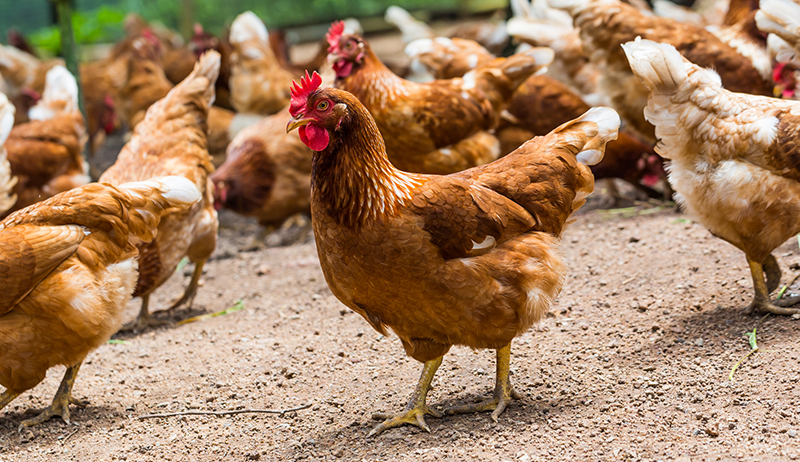
Ectoparasites are those that feed on the skin, scales or feathers of your chickens. These may cause problems for your flock in terms of egg production and health, and in severe cases, may lead to fatalities. Ectoparasites are either continuous or temporary parasites. Continuous parasites spend their entire adult lifecycle on the bird, while temporary parasites live off of the bird, but feed on its blood. Amy Murillo, PhD, at the University of California, identifies three ectoparasites to look for in your flock and shares her expertise for controlling parasite populations.
1. Northern Fowl Mites
Northern fowl mites are the most prevalent parasites among chickens, living in the feathers along the birds’ vents. These parasites are found in flocks around the country, but they prefer cooler climates and are most troublesome in the winter and spring months.
2. Lice
Lice are another common ectoparasite. There are several species of lice found on chickens, including the chicken body louse, shaft louse and fluff louse. Lice are pale yellow or white in color and mostly feed on feathers.
3. Sticktight Fleas
Sticktight fleas are also problematic. “The adult fleas embed themselves into the face, comb and wattles of the bird while they blood-feed,” Murillo says. “The immature fleas (larvae) live in organic material, such as bedding.”
Controlling Chicken Parasites
Cleanliness and biosecurity are the first lines of defense against parasites in your flock. Clean the chicken house regularly, and seal any cracks or crevices to limit rodent access.
“Keep wild birds and animals away from your flock, limit visitors and quarantine new birds,” Murillo advises.
Inspect your birds regularly, ideally monthly, and monitor parasite populations. Preferably, examine all birds, but if it is a large flock or it is too difficult to catch all the birds, focus on males, birds that look ill, or birds with damaged or commercially trimmed beaks.
“It is unlikely that ectoparasites will be equally distributed among a flock, and these birds are most likely to harbor detectable levels,” Murillo says.
Insecticides may be an option to treat infestations. Murillo cautions not all insecticides are legal for use on birds in all states. Some may only be used in the chicken coop or surrounding environment. The University of California, Riverside, department of veterinary entomology hosts a searchable database for registered insecticides by state that may be helpful in identifying products you can use.
Another alternative is providing a food-grade diatomaceous earth dust bath.
“We found that the most effective way to use DE is to mix about 6 cups with approximately 25 pounds of washed play sand in a plastic container, such as a swimming pool or cement mixing bin,” Murillo says.
Simply dusting the birds or the environment is not enough. The birds must dustbathe in it and get the DE into their feathers. Diatomaceous earth is made of microscopic sharp particles that damage the exoskeleton of the ectoparasites.
“DE may irritate people if not used in a well ventilated area and wear dust masks when handling, but does not harm the birds,” Murillo says.
If you catch parasites in your flock early, you may be able to prevent damage to the long-term health of your chickens.




